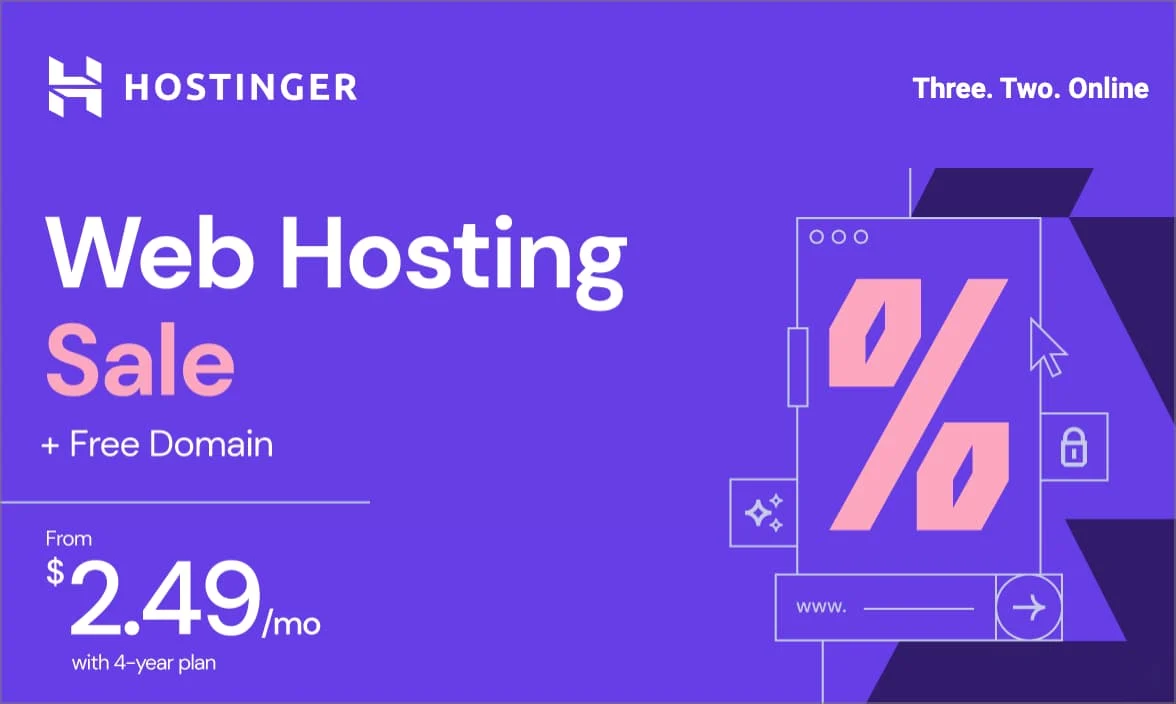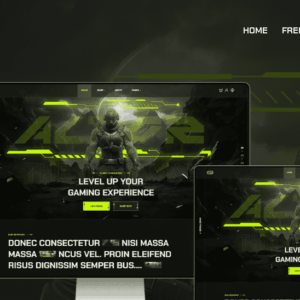
7 Proven Ways Web Designers Can Profit Online
Ways Web Designers
1. Introduction: Your Digital Gold Rush Awaits
The internet has revolutionized the way we do business. In today’s digital age, a well-crafted website isn’t just a luxury – it’s a necessity. Every business, from budding startups to established corporations, is vying for a prime spot in the online landscape. This demand has ignited a digital gold rush, creating unparalleled opportunities for skilled web designers.

But web design isn’t merely about aesthetics; it’s about crafting engaging, user-friendly experiences that drive conversions and boost brand visibility. With the right strategies, your web design skills can become a lucrative source of income. Whether you’re a seasoned pro or just starting, this guide is your roadmap to success.
Table of Contents
2. Freelancing: Your Gateway to Web Design Income
Freelancing offers a unique path to income in the world of web design. Let’s dive into the details, incorporating your relevant keywords:
1. The Flexibility of Freelancing: Design Your Ideal Work-Life Balance
- Freedom and Control: Freelancing gives you the autonomy to choose your projects, set your own hours, and work from wherever you please. This is perfect for those seeking flexibility and control over their schedule.
- Diverse Projects: You can take on a variety of web design projects that align with your interests and expertise. This keeps the work engaging and allows you to continuously learn and grow.
- Online Profit Potential: As a freelance web designer, you have the potential to earn a significant income online. With the right skills and strategies, you can build a thriving business from the comfort of your own home.
2. Building Your Portfolio: The Key to Attracting Clients
- Showcase Your Skills: A well-curated portfolio is essential for demonstrating your web design capabilities. Include your best work and highlight your ability to create visually appealing, functional, and user-friendly websites.
- Client-Focused Approach: Tailor your portfolio to resonate with your target audience. Showcase projects that align with the types of clients you want to attract.
- Web Design Business: Consider your portfolio as the foundation of your web design business. It’s a powerful marketing tool that helps you establish credibility and attract potential clients.
3. Platforms and Pricing: Navigating the Freelance Landscape
- Freelance Marketplaces: Explore popular platforms like Upwork, Fiverr, and Freelancer to find web design gigs and connect with clients.
- Networking and Referrals: Build relationships with other professionals in the industry and ask satisfied clients for referrals to expand your reach.
- Competitive Rates: Research industry standards and set competitive rates that reflect your experience and skills. Consider offering package deals for added value.
- Online Profit Strategies: Develop a pricing strategy that ensures profitability for your web design business. This includes factoring in your expenses, desired income, and the value you provide to clients.

Additional Tips for Success
- Marketing Your Services: Promote your freelance web design business through social media, your website, and targeted advertising.
- Client Communication: Effective communication is key to building strong client relationships and delivering successful projects.
- Continuous Learning: Stay updated on the latest web design trends and technologies to remain competitive in the market.
By combining your passion for web design with the flexibility and earning potential of freelancing, you can create a fulfilling and profitable career path. Let me know if you’d like a deeper dive into any of these areas!
3.Selling Website Templates and Themes: A Lucrative Path to Passive Online Income for Web Designers
Web design is a dynamic field offering various income streams, and one often overlooked avenue is creating and selling website templates and themes. This approach allows web designers to leverage their skills for both creative expression and significant financial gain. Let’s delve into the allure of this model and explore how to maximize your web design income through online profits.
Design Once, Earn Repeatedly: The Appeal of Templates and Themes
The core attraction of selling website templates lies in its potential for passive income. By investing time and expertise upfront to design visually appealing, functional templates, web designers create a product that can be sold repeatedly, generating income with minimal ongoing effort. This model is particularly appealing to those seeking to diversify their web design business or establish a reliable source of secondary income.
Benefits of Selling Templates and Themes:
- Scalability: Reach a global audience and sell unlimited copies of your designs.
- Flexibility: Work on your own schedule and from anywhere with an internet connection.
- Low Overhead: Minimal costs involved compared to client-based web design projects.
- Creative Outlet: Express your design style and experiment with different trends.
- Recurring Revenue: Earn income from a single design multiple times over.
Popular Marketplaces and Effective Marketing Strategies
Several platforms cater to web designers looking to sell their templates and themes. Some prominent marketplaces include:
- ThemeForest: A well-established marketplace with a vast customer base.
- Creative Market: Popular for unique, high-quality design assets.
- Etsy: A versatile platform suitable for niche and handcrafted designs.
- Your Own Website: For maximum control and profit margins.
To succeed in these marketplaces, effective marketing is crucial. Consider these strategies:
- High-Quality Presentation: Invest in professional product photos, clear descriptions, and live demos to showcase your designs effectively.
- SEO Optimization: Utilize relevant keywords like “web design templates,” “website themes,” “WordPress themes,” and “responsive designs” to improve discoverability.
- Social Media Promotion: Engage with potential customers on platforms like Pinterest, Instagram, and design communities to build your brand and drive traffic.
- Collaborations and Partnerships: Partner with bloggers or influencers in the web design niche to expand your reach.
- Email Marketing: Build an email list to notify subscribers of new releases and special offers.
Pricing for Profit: Maximizing Your Earnings
Determining the right price for your templates and themes requires balancing affordability with value. Consider these pricing models:
- Standard License: Allows a buyer to use the template on a single website.
- Extended License: Grants permission for usage on multiple client websites (ideal for freelancers and agencies).
- Subscription Model: Offer templates and themes as part of a membership program with recurring payments.
Additional Tips for Success:
- Niche Down: Focus on a specific industry or style (e.g., e-commerce, portfolio, blog) to attract targeted buyers.
- Offer Customization: Provide additional services like personalization or installation to increase revenue.
- Stay Updated: Keep your designs current with the latest web design trends and technologies.
- Provide Excellent Customer Support: Build trust and positive reviews by offering timely and helpful assistance.
By combining your web design expertise with a strategic approach to marketing and pricing, you can turn your template and theme creations into a thriving online business, generating passive income and opening new doors for your web design career.
4. Starting a Web Design Agency: Scaling Your Business for Maximum Web Design Income and Online Profit
Embarking on the journey of building a web design agency is a thrilling prospect, offering substantial potential for both creative fulfillment and significant web design income. Whether you’re transitioning from a successful freelance career or venturing into entrepreneurship, scaling your business requires careful planning and execution.
From Solo Freelancer to Agency Owner: Building Your Team
The transition from a solo freelancer to an agency owner is a major milestone, often driven by a desire to increase your web design income, take on larger projects, and expand your reach in the market. This shift involves:
- Delegation and Collaboration: Recognizing that you can’t do everything yourself is key. Begin by identifying tasks you can delegate to others, whether it’s administrative work, basic design elements, or client communication. This frees you up to focus on high-level strategy and client relationships.
- Hiring Talent: As your web design business grows, carefully recruit skilled designers, developers, content creators, and project managers who align with your vision and values. The right team becomes a force multiplier for your online profit potential.
- Establishing Processes: Develop clear workflows, project management systems, and communication channels. This ensures consistency, efficiency, and a positive client experience, which are essential for sustainable growth and recurring web design income.
Services and Specializations: Crafting a Comprehensive Offering

To maximize your agency’s online profit, you need to offer a range of services that cater to diverse client needs:
- Web Design and Development: This is your core offering, encompassing everything from creating visually appealing websites to building robust e-commerce platforms.
- UX/UI Design: Elevate your web design income by specializing in user experience (UX) and user interface (UI) design. This involves crafting intuitive and engaging websites that drive conversions and enhance the overall user journey.
- Content Creation: Offer content strategy, copywriting, and SEO optimization services. This helps clients attract organic traffic, improve search engine rankings, and ultimately boost their online profit.
- Maintenance and Support: Provide ongoing website maintenance, updates, and technical support. This ensures your clients’ websites remain secure, functional, and optimized for performance, generating recurring web design income.
- Specializations (Optional): Consider specializing in specific industries (e.g., healthcare, finance, education) or niches (e.g., sustainable brands, startups). This allows you to become a recognized expert and command premium pricing, significantly impacting your web design income.
Client Acquisition and Retention: Building Lasting Relationships for Steady Online Profit
A successful web design business thrives on a steady stream of clients and their continued satisfaction:
- Networking and Referrals: Build relationships with other professionals (e.g., marketers, photographers) and past clients. Referrals are a powerful source of new business and a testament to your agency’s quality and reputation.
- Online Presence: Invest in a well-designed website showcasing your portfolio, services, and client testimonials. Optimize your site for relevant keywords like “web design,” “web development,” and your chosen specializations to attract organic traffic and potential clients seeking to enhance their online profit.
- Content Marketing: Share valuable insights through blog posts, social media, and email newsletters. Position yourself as a thought leader in the web design space, attracting clients who value your expertise.
- Paid Advertising (Optional): Consider targeted advertising campaigns on platforms like Google Ads or social media to reach specific demographics and boost your web design income.
- Exceptional Service: Exceed client expectations by delivering high-quality work on time and within budget. Proactive communication, regular updates, and a focus on achieving client goals are key to fostering long-term relationships and recurring web design income.
4. Educational Products and Courses: Turning Your Web Design Expertise into Profit
The digital landscape is booming, and with it, the demand for skilled web designers has never been higher. As businesses increasingly recognize the importance of a strong online presence, aspiring designers are eager to learn the ropes. This presents a golden opportunity for experienced web designers to share their knowledge and generate income through educational products and courses.
The Rise of Online Learning: A Web Design Education Boom
The convenience and flexibility of online learning have transformed the education sector. Web design, with its practical, hands-on nature, is particularly well-suited to this format. Aspiring designers from all walks of life are turning to online courses and tutorials to gain the skills they need to enter this lucrative field or enhance their existing knowledge. This creates a substantial market for high-quality educational content.
Creating Valuable Content: Sharing Your Web Design Expertise
To tap into this growing demand, consider developing online courses, tutorials, or workshops that cater to different skill levels. You can cover a wide range of topics, from the fundamentals of HTML, CSS, and JavaScript to more advanced concepts like responsive design, user experience (UX), and search engine optimization (SEO). By packaging your knowledge into well-structured, engaging content, you can create a valuable resource for your audience.
- Course formats: Experiment with different formats, such as video lessons, written tutorials, interactive quizzes, and assignments to cater to different learning styles.
- Real-world projects: Incorporate real-world projects and case studies to help students apply their knowledge and build a portfolio.
- Community building: Create a forum or community where students can interact, ask questions, and share their work. This fosters a sense of belonging and encourages continued learning.
Platforms and Promotion: Getting Your Web Design Education Out There
Several platforms are available for hosting and marketing your educational products. Some popular options include:
- Online course marketplaces: Platforms like Udemy, Coursera, and Skillshare offer a vast audience and marketing tools to help you reach potential students.
- Your own website: Creating your own platform gives you more control over branding and pricing, but requires additional marketing efforts.
- Social media: Leverage social media platforms like LinkedIn, Twitter, and Facebook to build a following, share your expertise, and promote your courses.
5. Blogging and Content Creation: Establishing Your Web Design Authority
A strong online presence is essential for web designers today. Blogging and content creation are powerful tools to not only showcase your expertise but also drive potential clients to your virtual doorstep.
The Power of Thought Leadership: Building Credibility and Attracting Clients
- Showcasing Expertise: In-depth blog posts and articles demonstrate your understanding of web design trends, technologies (like responsive design, SEO optimization, e-commerce platforms), and best practices. When you share valuable insights, you position yourself as a trusted authority in the field. Potential clients are more likely to choose a web designer who clearly knows their stuff.
- Attracting Your Ideal Client: Content targeted to your niche (e.g., “Web Design for Eco-Conscious Businesses” or “Creating High-Converting Landing Pages”) attracts the types of clients you want to work with. When your content speaks directly to their needs and pain points, they’ll see you as the solution.
- Building Relationships: Engaging blog posts invite comments and social media shares, opening a dialogue with potential clients. This interaction builds relationships and trust, turning casual readers into warm leads.
SEO and Promotion Strategies: Optimizing Content and Driving Traffic (Your Web Design Income Boosters)
- Keyword Research: Identify the terms your potential clients are searching for (e.g., “web design services,” “website redesign,” “affordable web design,” etc.). Integrate these keywords naturally into your blog posts, titles, and meta descriptions.
- On-Page SEO: Use proper heading tags (H1, H2, etc.), create descriptive image alt text, and ensure fast page load times. These technical elements make your content more visible to search engines.
- Content Promotion: Share your blog posts on social media platforms relevant to your target audience (LinkedIn, Twitter, Facebook groups, etc.). Consider guest posting on industry blogs to expand your reach. Engaging in online communities and forums can also establish you as a thought leader.
Monetizing Your Blog: Turning Your Expertise into Profit
- Affiliate Marketing: Recommend web design tools, hosting providers, or themes and earn a commission on referrals. This is a great way to add passive income to your web design business.
- Advertising: Once your blog gains traffic, you can sell ad space or join ad networks like Google AdSense.
- Sponsorships: Partner with brands that complement your services (e.g., a stock photo provider or a content management system company) for sponsored content or product reviews.
- Premium Content: Offer in-depth guides, templates, or online courses on web design topics. This creates a direct revenue stream from your knowledge.
Example: Blog Post Ideas for Web Designers
- “5 Essential Web Design Trends for 2024 and How to Implement Them”
- “The Ultimate Guide to Choosing the Right CMS for Your Business”
- “Web Design Mistakes That Are Costing You Clients (and How to Fix Them)”
- “Case Study: How We Increased Website Traffic by X% with Strategic Web Design”
6. Affiliate Marketing: Partnering for Profit in Web Design
Affiliate marketing is a powerful way to boost your web design income and build a thriving online profit stream. It’s a performance-based model where you recommend products or services relevant to your web design audience. When someone makes a purchase through your unique affiliate link, you earn a commission. It’s a win-win scenario: your audience gets valuable resources, the companies get sales, and you generate web design business revenue.

Finding the Right Partners for Your Web Design Business
- Align with Your Expertise: Choose products and services that you genuinely believe in and that align with your web design expertise. This builds trust with your audience. Examples could be web hosting providers, website builders, design software, stock photo subscriptions, or even online courses.
- Research Affiliate Programs: Many companies in the web design space offer affiliate programs. Look for reputable brands with competitive commission rates, cookie durations (the time frame for tracking purchases), and helpful marketing materials.
- Consider Your Audience: Think about what your web design audience truly needs. Are they beginners looking for user-friendly tools? Experienced designers seeking advanced software? Cater your recommendations to their specific interests and skill levels.
Promoting with Integrity: The Key to Online Profit
- Be Honest and Transparent: Always disclose your affiliate relationships upfront. Use clear language like “affiliate link” or “This post contains affiliate links” to maintain transparency.
- Share Personal Experiences: If you’ve used a product or service yourself, share your honest review. This adds authenticity to your recommendations.
- Focus on Value: Don’t just push products for the sake of commissions. Prioritize providing value to your audience. Recommend tools that will genuinely help them improve their web design skills or projects.
- Diversify Your Recommendations: Don’t rely on a single affiliate partner. Partner with a variety of companies to offer a broader range of options to your audience.
Web Design Income Boost: Tips for Success
- Create High-Quality Content: Produce informative blog posts, tutorials, videos, or social media content where you can naturally integrate your affiliate links.
- Build an Engaged Community: Foster a strong online community around your web design business. This could be through social media, email newsletters, or a dedicated forum. Engaged audiences are more likely to trust your recommendations.
- Track Your Results: Monitor which affiliate partners and promotional strategies are performing best. This data will help you refine your approach over time.
Example: Affiliate Marketing in Action
Let’s say you’re a web designer specializing in e-commerce sites. You could partner with a popular e-commerce platform and recommend it to your audience through a detailed blog post. You could highlight its features, benefits, and how it can help web designers build successful online stores. Include your affiliate link in the post, and when someone clicks on it and signs up, you earn a commission.
Affiliate marketing can be a lucrative way to monetize your web design expertise. By choosing the right partners, prioritizing integrity, and creating valuable content, you can establish a sustainable online profit stream.
7. Consulting and Coaching: Unlocking New Revenue Streams for Web Designers
If you’ve amassed a wealth of knowledge and experience in web design, you’re sitting on a potential goldmine. Many businesses are eager to tap into the expertise of seasoned designers to enhance their online presence and drive web design income or bolster their online profit. By offering consulting or coaching services, you can leverage your skills to help these businesses achieve their goals while generating a lucrative web design business for yourself.
What Can You Offer?
- Web Design Strategy Consulting: Help businesses develop comprehensive web design strategies that align with their brand identity, target audience, and overall business objectives. This could involve analyzing their existing website, identifying areas for improvement, and recommending solutions to optimize user experience, conversions, and ultimately, online profit.
- Website Audit and Optimization: Conduct in-depth audits of websites, assessing technical aspects (e.g., site speed, mobile responsiveness), SEO effectiveness, content quality, and user flow. Provide actionable recommendations to enhance the website’s performance and increase its potential for generating web design income.
- One-on-One Coaching: Offer personalized coaching sessions to web designers or business owners who want to improve their skills and knowledge. Share your insights, techniques, and best practices to help them create more effective websites and drive better results for their web design business.
- Group Workshops and Training: Host workshops or training sessions on specific web design topics (e.g., UX/UI design, e-commerce optimization, SEO for web designers). This can be a great way to reach a wider audience and establish yourself as a thought leader in the web design business community.
Pricing and Packaging: Finding the Right Fit for Your Clients
When it comes to pricing your consulting or coaching services, there are several options to consider:
- Hourly Rates: This is a straightforward approach, but it can be challenging to estimate the time required for some projects accurately. Consider offering a free initial consultation to gauge the scope of work and provide a more accurate estimate.
- Project-Based Pricing: This works well for clearly defined projects with specific deliverables. You can set a fixed price for the entire project or break it down into phases with milestones and corresponding payments.
- Package Deals: Create packages that bundle different services together at a discounted rate. For example, you could offer a “Website Optimization Package” that includes an audit, consultation, and implementation support.
- Retainer Agreements: This model provides ongoing support and consultation for a fixed monthly fee. It can be a good option for businesses that need regular guidance on their web design business or want to ensure they have access to your expertise on an ongoing basis.
Marketing Your Expertise: Attracting Clients Who Need Your Help
To effectively market your consulting and coaching services, consider the following strategies:
- Showcase Your Expertise: Create a dedicated page on your website highlighting your services, experience, and client testimonials. Share case studies that demonstrate your ability to drive results for web design business clients.
- Content Marketing: Publish blog posts, articles, or videos on relevant web design topics. This helps establish your credibility and attract potential clients who are searching for information online.
- Network and Build Relationships: Attend industry events, connect with other professionals on social media, and reach out to your existing network. Building relationships can lead to referrals and new business opportunities.
- Paid Advertising: Consider running targeted ads on platforms like Google Ads or social media to reach a wider audience and generate leads for your web design business.
By venturing into consulting and coaching, you can not only diversify your web design income but also make a meaningful impact on the success of other businesses in the online world.
Conclusion
The future of web design is undeniably bright. The demand for skilled web designers continues to rise, fueled by the ever-growing online landscape and the increasing importance of a strong digital presence. This translates into substantial web design income potential for those who seize the opportunity.
Your Path to Online Profit
If you’re ready to turn your passion for design into a thriving web design business, there’s no better time than now. Start by honing your skills, building a portfolio, and exploring the various ways to monetize your expertise. Whether you choose to freelance, work for an agency, or create your own products and services, the possibilities for generating online profit are vast.
Don’t wait for the perfect moment. Take the first step today and unlock the world of web design income. Your online profit awaits!
FAQs
How much can web designers earn online?
Web designer income varies widely. Freelancers can make $25-$100+ per hour, while agency owners or those with successful products can earn six figures or more annually.
Do I need a formal degree in web design to profit online?
No, a formal degree isn’t always necessary. Many successful designers are self-taught or have taken online courses. Strong skills, a good portfolio, and business savvy are key.
What are the best platforms for finding web design clients online?
Upwork, Fiverr, Freelancer, and Guru are popular freelance platforms. Networking on LinkedIn or through industry events can also be effective.
How do I set my rates as a freelance web designer?
Consider your experience, skills, location, and the project’s complexity. Research industry averages and adjust accordingly.
How do I build a strong portfolio to attract clients?
Start with personal projects or offer discounted work to friends or family. Showcase a variety of styles and types of websites.
Where can I sell my web design templates and themes?
Popular marketplaces include ThemeForest, Creative Market, and Etsy. You can also sell directly from your own website.
How should I price my templates and themes?
Research competitor pricing and consider the quality, features, and uniqueness of your designs. Offer different licensing options (e.g., personal vs. commercial use).
How do I transition from a freelancer to running a web design agency?
Start by hiring subcontractors or employees to handle specific tasks. Develop processes for client onboarding, project management, and quality control.
What services should my web design agency offer?
Offer a core set of services like website design and development, SEO, and content creation. Consider specializing in a particular niche or type of website.
What platforms can I use to host and sell online courses?
Popular options include Udemy, Skillshare, Teachable, Thinkific, and Podia. You can also host courses directly on your own website.
What topics should I cover in a web design course?
Consider beginner topics like design principles, HTML/CSS, and website builders. Advanced topics could include responsive design, JavaScript, or specific CMS platforms (e.g., WordPress).
How do I get started with a web design blog?
Choose a blogging platform (e.g., WordPress, Squarespace, Wix). Create high-quality content like tutorials, case studies, industry news, or design inspiration.
How can I use SEO to attract more visitors to my blog?
Research keywords related to web design and incorporate them into your content. Optimize titles, descriptions, and image alt tags. Build backlinks from other websites.
Where can I find web design affiliate programs to join?
Look for web hosting companies, website builders, design software providers, or online course platforms that offer affiliate programs.
How do I promote affiliate products effectively?
Write honest reviews or tutorials featuring the product. Create social media posts, email campaigns, or banners on your website to share your affiliate links.
What qualifications do I need to be a web design consultant or coach?
Strong design skills and experience are essential. Consider certifications or additional training in business, marketing, or communication.
How do I market my consulting or coaching services?
Network with potential clients through LinkedIn, industry events, or online communities. Showcase your expertise through blog posts, webinars, or free consultations.
What are some common mistakes to avoid as a web designer trying to profit online?
Undercharging for your services, not marketing yourself effectively, not specializing in a niche, and neglecting client communication are common pitfalls.
I need Services with …
- Wordpress Service
- Shopify Service
- Youtube Service
- Cv and resume Service
- Linkedin Service
Latest Post
-
Top Daily Taste WordPress Theme: Best Choice for Your Site
$ 15Original price was: $ 15.$ 13Current price is: $ 13. Add to cartAdd to WishlistAdd to Wishlist -

Get Hostinger’s Low-Cost Hosting Now!
Don’t miss out on affordable hosting with Hostinger – click now to bring your website online at an unbeatable price!











1 comment
[…] today’s fast-paced digital world, eye-catching ads are no longer a luxury; they are a necessity. The competition for attention has never been fiercer, […]